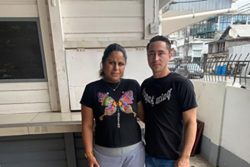Even as it continues with aggressive exploration and production plans in the Stabroek Block which has already significantly contributed to four quarters of increased profits, Hess Corporation yesterday said that the two recent discoveries here could mean an additional oil platform for that area, aside from the one FPSO per year plans for Guyana.
“Guyana is going to be bringing on an FPSO almost once a year here for the coming years. So we’re going to have a growing free cash flow,” president of Hess, John Hess, remarked yesterday at the company’s second quarter earnings call.
Hess, which holds a 30 per cent working interest in the Stabroek Block it shares with partners ExxonMobil and CNOOC, reported revenues of some US$2.9 billion for the quarter ended June 2022, as compared to the US$1.6 billion reported last year.
The company’s net income was pegged at US$667 million.
Hess said that in the second quarter, it has sold 6.1 million-barrel cargoes of crude oil in Guyana, up from sales of 2.3 million barrels of crude oil in the first quarter.
And net production guidance for Guyana for this year is expected to be approximately 75,000 bopd (barrels of oil per day) for Hess. The company’s president pointed out that it includes approximately 6,000 bopd of tax barrels.
And pointing to its two latest discoveries, at Seabob and Kiru-Kiru, Hess’ Chief Operations Officer, Greg Hill, noted that it would only mean potential growth to the already 11 billion barrels gross recoverable hydrocarbons.
“As we said, these two discoveries, Seabob and Kiru-Kiru, which are still underway, those will be additive to the already announced 11 billion barrels gross recoverable hydrocarbons. I think the significant part about these discoveries is why they’re so encouraging, is that if you look at Seabob, that is leading to a potential inboard oil play in the southeastern part of the Stabroek Block. And in fact, as we look forward, the next 2 wells, Yarrow and Banjo, will help further delineate that inboard oil opportunities. So there could be another oil FPSO centered on that inboard oil play,” Hill explained.
What has not changed is the company’s plans to see the potential for at least 6 FPSOs by 2027, with a gross production capacity of more than 1 million barrels of oil per day, and up to 10 FPSOs to develop the discovered resources on the block.
As it gave an overview into operations here in Guyana for the second quarter, Hess said that net production averaged 67,000 barrels of oil per day, reflecting “a modest delay in the ramp-up of Liza Phase 2.”
But overall, “the start-up has been very successful.”
In July, Liza Phase 2 reached its nameplate capacity of 220,000 barrels of oil per day or about 56,000 barrels of oil per day net to Hess.
For the Liza Phase 1 production, optimisation work was completed in the second quarter, and the FPSO is now operating at or above its new gross production capacity of 140,000 barrels of oil per day.
Earlier this month, SBM Offshore also completed the replacement of the flash gas compressor, which has resulted in high reliability and only background flaring.
ExxonMobil had on Tuesday also reported that the compressor had been replaced. And before that, they had “worked extremely hard to minimise the amount of flare that we had and so [be in] full compliance with the regulations.”
Third quarter net production from Guyana is forecast to increase to a range of 90,000 to 95,000 barrels of oil per day and average approximately 75,000 barrels of oil per day for the full year 2022, according to Hess.
With regard to the Payara development, the company said that topside fabrication and installation on the Prosperity FPSO is well underway in Singapore and development drilling in Guyana continues at pace.
The project, which will have a gross production capacity of 220,000 barrels of oil per day is “now more than 80% complete and is well on track to achieve first oil in late 2023.”
Hess said that it had in April sanctioned a fourth development at the Yellowtail, which will develop approximately 925 million barrels of oil and have a breakeven Brent oil price of approximately $29 per barrel.
The project will have a gross production capacity of 250,000 barrels of oil per day and is on track to achieve first oil in 2025.
Regarding the fifth development at Uaru Meco, ExxonMobil has relayed to its partner that it anticipates submitting the plan of development to the government of Guyana in the fourth quarter of this year, with first oil targeted for 2026, subject to government approvals and project sanctioning.
In terms of future drilling activity on the Stabroek Block, Hess said that next up in the queue are the Yarrow and Banjo wells.
“The Yarrow-1 well will test stacked Upper Campanian targets, up-dip of discoveries at Whiptail and Tilapia. The well is located 19 miles south of the Yellowtail 1 discovery well. The Banjo-1 well will also target stacked Upper Campanian targets west of Barreleye and up-dip of Mako. The well is located 8 miles northwest of the Barreleye-1 discovery well. These wells will appraise the development potential of the inboard oil play in the southeast portion of the block,” Hess said.
In additional developments, Hess said that the Shell-operated well at Zanderi 1 in nearby Suriname is expected to spud in late August and will test both Upper Campanian and deeper play stacked targets. Hess, Chevron and Shell each have a one third working interest.








